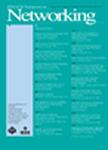版权所有:内蒙古大学图书馆 技术提供:维普资讯• 智图
内蒙古自治区呼和浩特市赛罕区大学西街235号 邮编: 010021

作者机构:Dept Elect & Comp Engn Boston MA 02115 USA Univ Catania Dipartimento Ingn Elettr Elettron & Informat I-92125 Catania Italy
出 版 物:《IEEE-ACM TRANSACTIONS ON NETWORKING》 (IEEE/ACM网络汇刊)
年 卷 期:2018年第26卷第6期
页 面:2815-2828页
核心收录:
学科分类:0810[工学-信息与通信工程] 0808[工学-电气工程] 08[工学] 0812[工学-计算机科学与技术(可授工学、理学学位)]
基 金:ONR [0014-16-1-2213, N00014-17-1-2046] NSF [CNS-1618727]
主 题:Network slicing 5G congestion games game theory distributed algorithms
摘 要:Radio access network (RAN) slicing is an effective methodology to dynamically allocate networking resources in 5G networks. One of the main challenges of RAN slicing is that it is provably an NP-Hard problem. For this reason, we design near-optimal low-complexity distributed RAN slicing algorithms. First, we model the slicing problem as a congestion game, and demonstrate that such game admits a unique Nash equilibrium (NE). Then, we evaluate the Price of Anarchy (PoA) of the NE, i.e., the efficiency of the NE as compared with the social optimum, and demonstrate that the PoA is upper-bounded by 3/2. Next, we propose two fully-distributed algorithms that provably converge to the unique NE without revealing privacy-sensitive parameters from the slice tenants. Moreover, we introduce an adaptive pricing mechanism of the wireless resources to improve the network owner s profit. We evaluate the performance of our algorithms through simulations and an experimental testbed deployed on the Amazon EC2 cloud, both based on a real-world dataset of base stations from the OpenCellID project. Results conclude that our algorithms converge to the NE rapidly and achieve near-optimal performance, while our pricing mechanism effectively improves the profit of the network owner.